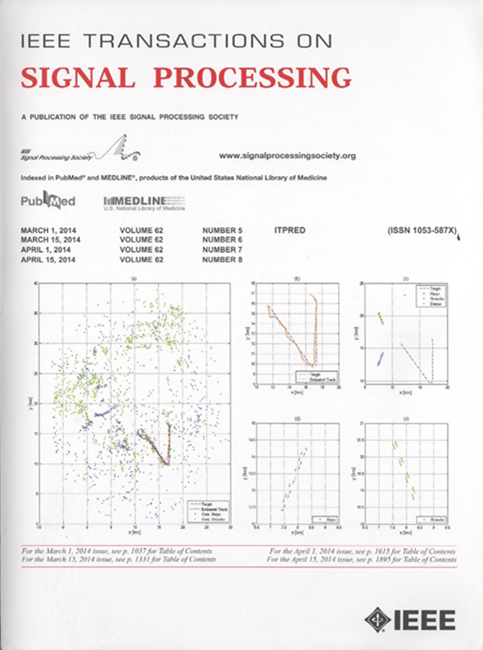Invariance Theory for Radar Detectionin Disturbance With Kronecker ProductCovariance Structure—Part II: CompoundGaussian Environment
IF 4.6
2区 工程技术
Q1 ENGINEERING, ELECTRICAL & ELECTRONIC
引用次数: 0
Abstract
In this part of the paper, we consider the invariant framework and the novel constant false alarm rate (CFAR) detector design of Part I in compound Gaussian clutter. Specifically, the focus is on detecting range-spread targets embedded in compound Gaussian clutter that exhibits a Kronecker covariance structure. A suitable transformation group has been identified, ensuring that invariance implies the fully CFAR property, i.e., with respect to both the Kronecker covariance matrix and the texture. A maximal invariant is derived and used to gain insightful re-expressions of some established two-step adaptive CFAR detectors. At the stage of detector design, the pseudo-missing strategy proposed in Part I is adapted to the compound Gaussian case and then integrated into the test architectures to yield modified adaptive detectors. Furthermore, the one-step generalized likelihood ratio test is derived. Both detection strategies result in fully CFAR detectors under some mild technical conditions, as evidenced by their invariance with respect to the identified transformation group. For performance evaluation, their CFAR behavior and detection probability are assessed and analyzed across different experimental setups and signal models, highlighting the superior performance of the newly proposed detectors compared to some conventional counterparts and to those that do not leverage the prior (Kronecker) structure.Kronecker积协方差结构干扰下雷达检测的不变性理论第二部分:复合高斯环境
在这一部分中,我们考虑了复合高斯杂波中的不变量框架和第一部分的新型恒虚警率检测器设计。具体来说,重点是检测嵌入在具有Kronecker协方差结构的复合高斯杂波中的距离扩展目标。已经确定了一个合适的变换组,确保不变性意味着完全的CFAR属性,即,关于Kronecker协方差矩阵和纹理。导出了一个极大不变量,并利用它得到了一些已建立的两步自适应CFAR检测器的深刻的重新表达式。在检测器设计阶段,将第一部分中提出的伪缺失策略应用于复合高斯情况,然后将其集成到测试体系结构中以产生改进的自适应检测器。进一步推导了一步广义似然比检验。在一些温和的技术条件下,这两种检测策略都会产生完全的CFAR检测器,这可以通过它们相对于所识别的转换组的不变性来证明。为了进行性能评估,他们的CFAR行为和检测概率在不同的实验设置和信号模型中进行了评估和分析,突出了新提出的检测器与一些传统同类和那些不利用先验(Kronecker)结构的检测器相比的优越性能。
本文章由计算机程序翻译,如有差异,请以英文原文为准。
求助全文
约1分钟内获得全文
求助全文
来源期刊

IEEE Transactions on Signal Processing
工程技术-工程:电子与电气
CiteScore
11.20
自引率
9.30%
发文量
310
审稿时长
3.0 months
期刊介绍:
The IEEE Transactions on Signal Processing covers novel theory, algorithms, performance analyses and applications of techniques for the processing, understanding, learning, retrieval, mining, and extraction of information from signals. The term “signal” includes, among others, audio, video, speech, image, communication, geophysical, sonar, radar, medical and musical signals. Examples of topics of interest include, but are not limited to, information processing and the theory and application of filtering, coding, transmitting, estimating, detecting, analyzing, recognizing, synthesizing, recording, and reproducing signals.
 求助内容:
求助内容: 应助结果提醒方式:
应助结果提醒方式:


